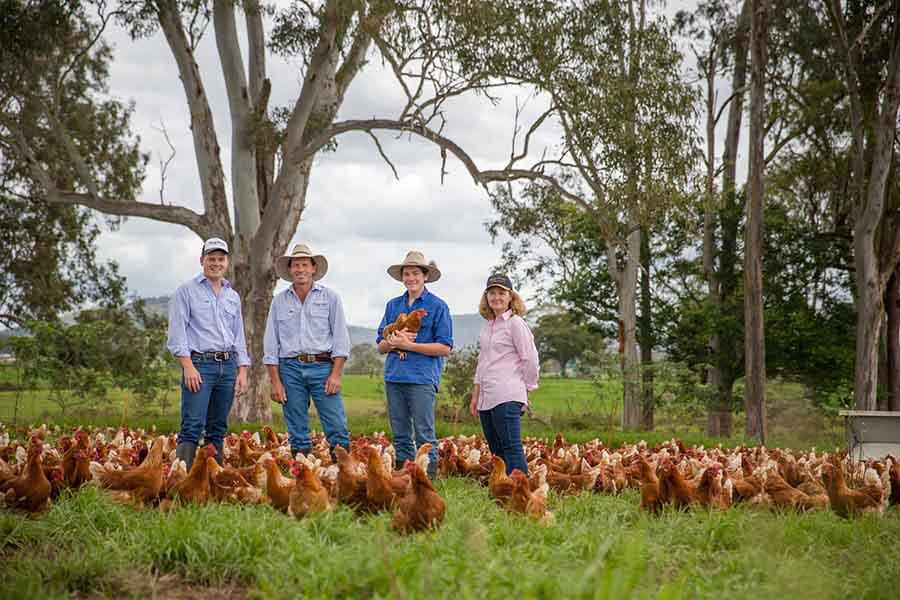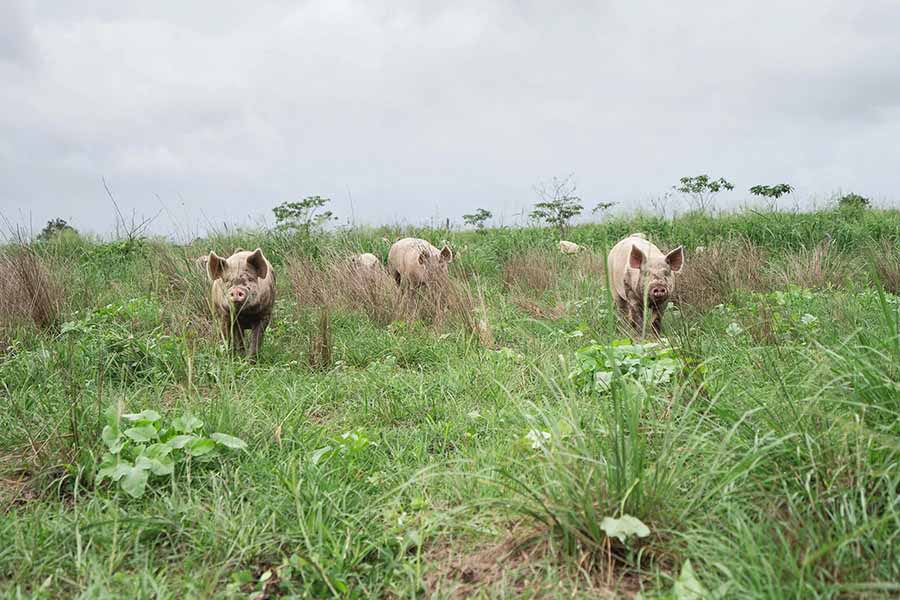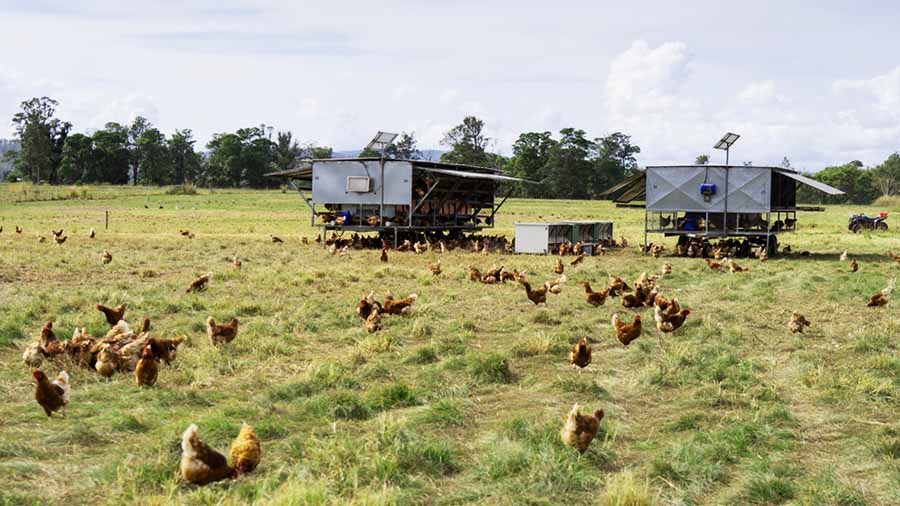The history of Forage Farms begins almost 50 years before the Andrews family moved to the Kybong property in 2017. In 1974, Stuart's parents, Peter and Anne, purchased Tarwyn Park, a salinised, eroded and degraded former horse stud in the Bylong Valley, New South Wales.
Determined to restore this degraded land, Peter began a long process of research, experimentation and testing to repair the landscape. He started by attempting to slow the water flow through the severely eroded stream, allowing the land to restore its hydrology. His learnings through this and other experiments led to a deep understanding and passion for a practice he named Natural Sequence Farming (NSF). Today, NSF is an internationally recognised system of regenerative farming used to restore degraded landscapes.
 Stuart and his wife Megan with their family.
Stuart and his wife Megan with their family.
Peter has spent the better part of the last five decades learning, implementing and teaching others about Natural Sequence Farming. In 2012, his son Stuart started Tarwyn Park Training, a school to formally educate landholders on NSF principles.
This is where Forage Farms comes in. Along the way, students of Tarwyn Park Training courses raised questions about how to restore a degraded landscape while maintaining a profitable and productive farming operation. Stuart says, 'We knew it would work in theory but needed to run a large-scale experiment to show our students and others that they could maintain profitability while implementing these systems.'
In 2017 Stuart and his wife, Megan, decided to purchase a farming property in a moderately degraded state to test this theory. They acquired the Kybong property in 2015, and work began to heal the landscape while building a financially viable business.



